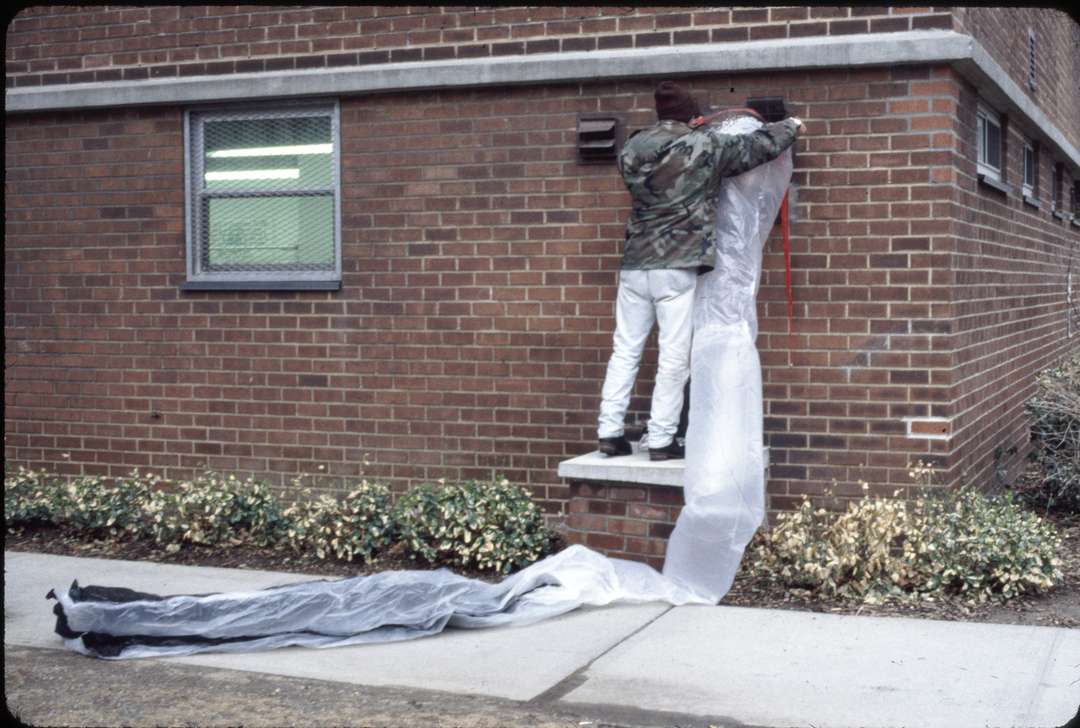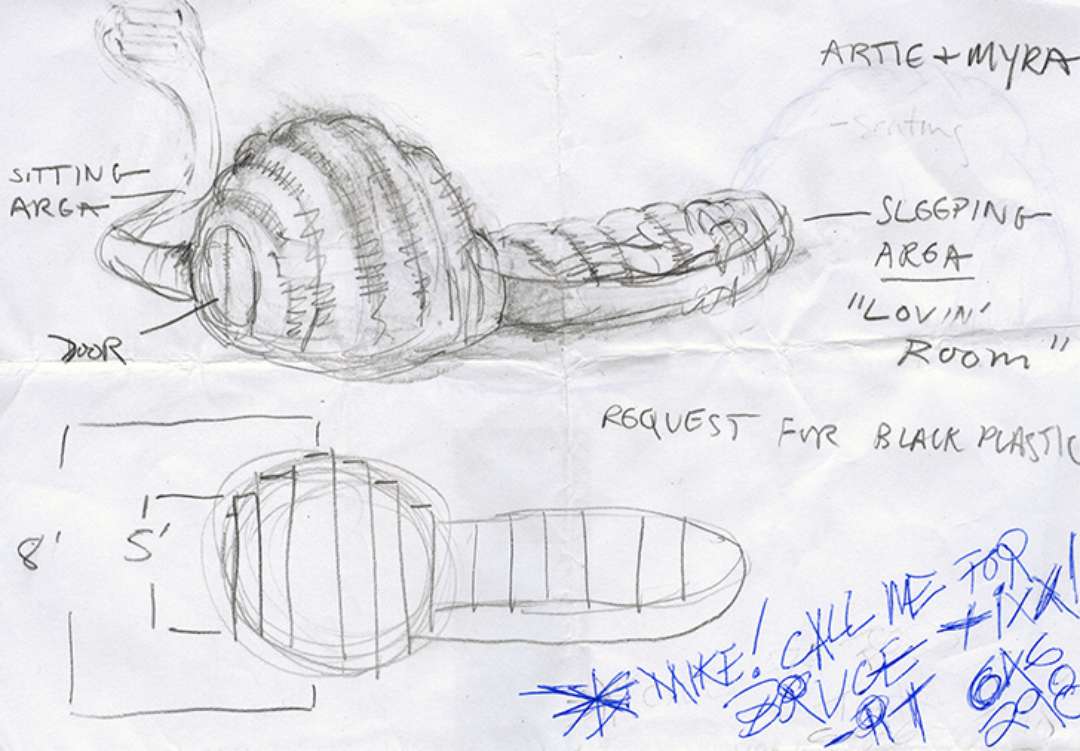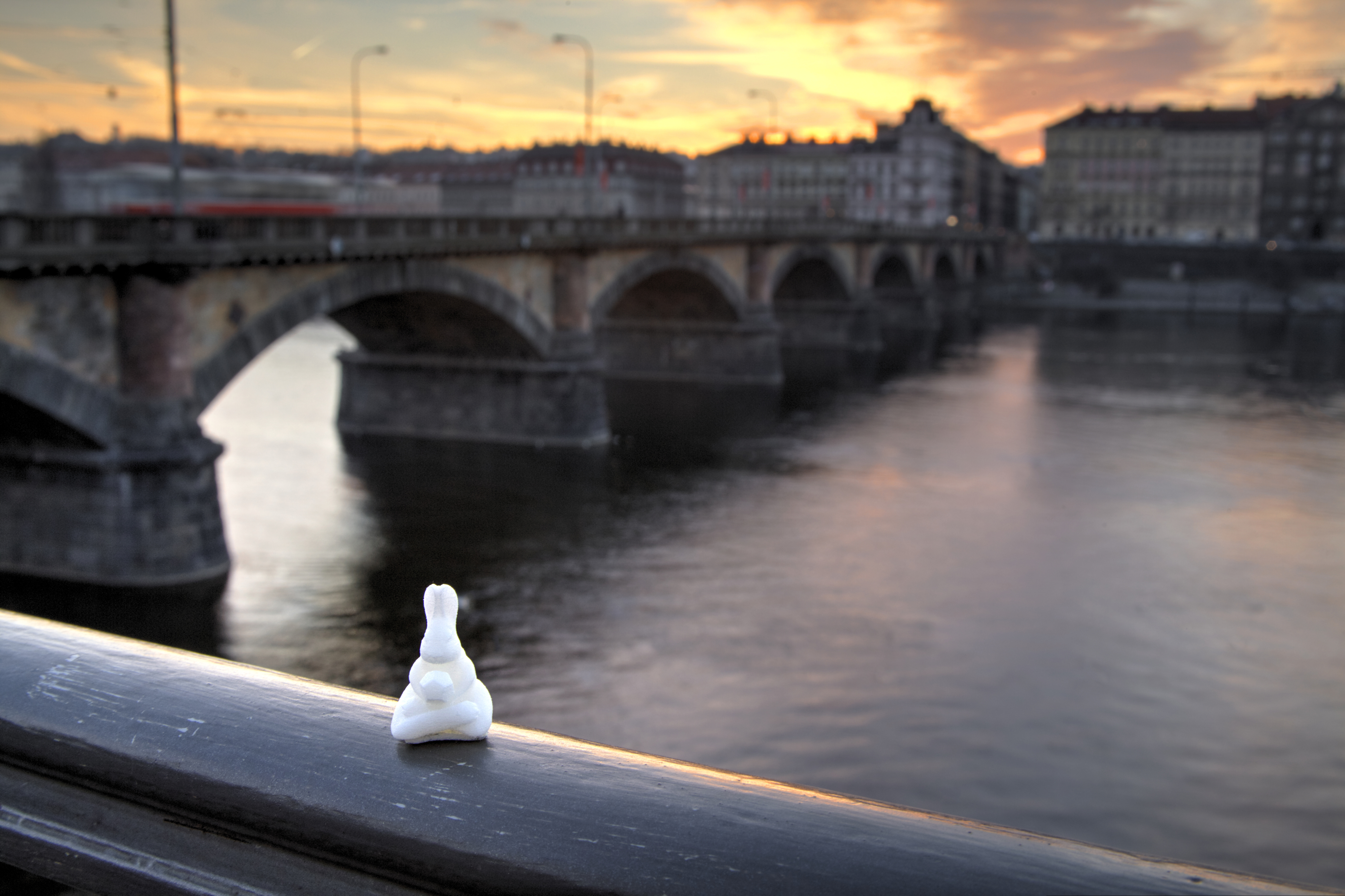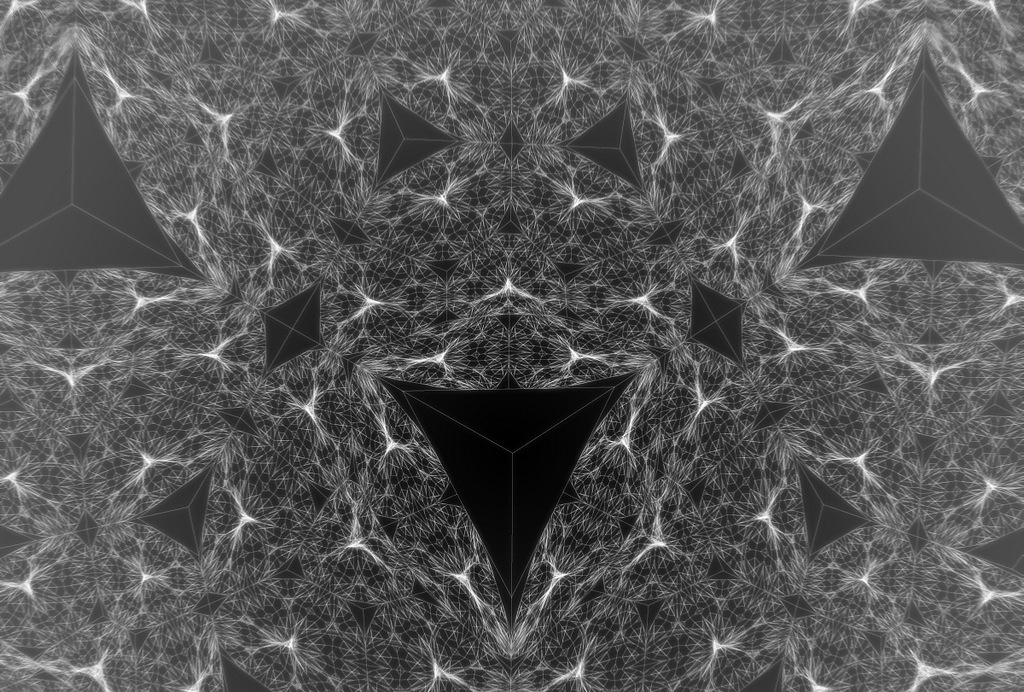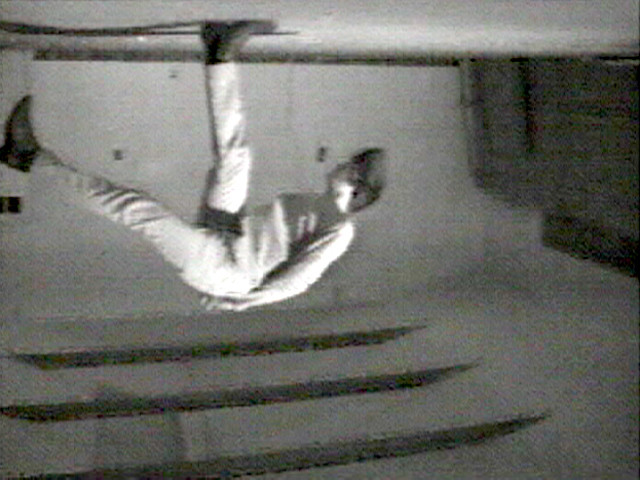Monday, May 9, 2016
HW14.4 Brushbot
For my robot, I decided to attach my motor to a tube of chapstick. I am always in need of chapstick and I like the idea of creating a tube that could follow me around and always be at my disposal.
3 Credit Project
Besides doing extra artist research throughout the semester, I completed an additional project to earn an extra credit for this class. My project focussed on the relationship between digital embroidery and hand embroidery. First, I used a digital embroidery machine to make the original design. I chose to only use designs that are inherently available on the machine. Digital embroidery gives you the option to create your own designs on Illustrator and then upload them to the machine, but I wanted to focus on the machine as much as possible during this step and not bring my own creative process into it. I used two flower designs that are available in the machine's factory settings. I decided to use warm tones of thread in the pink and red family. I used the same flower design multiple times, but changed the size and placement. The machine was interesting to use and its speed was incredible.
This is a time-lapse video
This is a time-lapse video
Once I was done using the digital embroidery machine, I was left with a rather plain looking hoop, so I began to to imagine how I would add hand embroidery to the project.
 |
| I accidentally cut the fabric and had to superglue it together, therefore there is a glue stain towards the top |
I wanted to distinguish the digital and hand embroidery as much as possible so I decided to use bright green threads of different hues. To contrast the organic images of the flowers, I chose to create geometric shapes with my hand embroidery. I also think it is slightly ironic that the machine was used for the organic aspects of the work and my hands were used for the more manufactured features.
HW14.2 Final Project
For my final project, I used Photoshop to design my own origami paper. The paper is a mandala of children at play and children's toys. I found the images online and cropped them of their backgrounds. I used Photoshop to flip and mirror them in different ways. I made one version of the paper with a black background and one version with a white background. The mandala was meant to focus on the physical and childlike aspects of the theme, play.
I then used the paper to make an origami chess set. I used the origami deigns of Joseph Wu, which can be found at http://www.josephwu.com/Files/PDF/chess.pdf. There were six distinct piece designs for the king, queen, rook, knight, bishop, and pawn. The paper design with the white background was used for the white pieces and the paper design with the black background was used for the black pieces. The result is a usable chess set. I chose to make a chess set because it represents the strategical, cerebral aspects of play.
 |
| Joseph Wu's designs |
 |
| Details of the Knight piece |
Wednesday, May 4, 2016
HW14.3 Class Review
Looking back on this class, I have learned many practical and theoretical things about new media art. The class discussions allowed me to build my opinions of new media based off of the ideas and experiences of my classmates. I especially enjoyed the hands-on studio aspects of the class that allowed us to be creative with the materials and tools that we were learning about. I can see myself returning to many of the projects we did this semester as inspiration in the future. I think that new media art techniques are an interesting addition to the art classroom and allow students to explore different ways of making.
As for my personal learning objectives for the semester, through the artist research and hands-on work I have become more aware of the benefits of new media materials for artists. The possibilities are endless when it comes to new media art and different artists can use the same materials to create vastly different projects. Digital technology also allows new media artists to display their art in more ways than traditional mediums.
The projects in this class have also helped me accomplish my second learning objective. I have learned to combine different art mediums especially through the final project and my extra credit project. Combining machine embroidery and hand embroidery was an explorative project due to their extreme similarities and major differences.
As for my personal learning objectives for the semester, through the artist research and hands-on work I have become more aware of the benefits of new media materials for artists. The possibilities are endless when it comes to new media art and different artists can use the same materials to create vastly different projects. Digital technology also allows new media artists to display their art in more ways than traditional mediums.
The projects in this class have also helped me accomplish my second learning objective. I have learned to combine different art mediums especially through the final project and my extra credit project. Combining machine embroidery and hand embroidery was an explorative project due to their extreme similarities and major differences.
Thursday, April 28, 2016
HW13.3 Reading Response
I was fascinated to learn about A.C. Gilbert and his dedication to his Erector Sets. The way he invented so many types of maker sets and even created his own magazine to publicize the value of making and tinkering is incredible. I think that his work led to the proliferation of hands-on, experiential activities for children, but it was also clearly motivated by financial gain. As a salesman, Gilbert's main goal was to sell and although his products were actually great, he used lies and hyperbole to sell them. The economics of maker sets is still an issue today as many companies sell pre-packaged kits that result in a product, but do not extend far beyond that, unless you buy another kit.
I also found it interesting that the introduction of "physical computing with Arduino and other microcontrollers, low-cost 3D printers and cutters, and programming" have had such an influence on the making revolution. I am especially interested in the implications of accessible 3D printers because I think that they may be the answer to the limited scope of maker kits. Although maker kits only really allow you to create one project, the use of 3D printers would allow you to reuse the components of a maker kit in new ways. Once you are exposed to the technology included in the maker kit, you will inevitably have your own ideas for its other uses. 3D printers will allow you to design and create materials that can make your ideas a reality.
I also found it interesting that the introduction of "physical computing with Arduino and other microcontrollers, low-cost 3D printers and cutters, and programming" have had such an influence on the making revolution. I am especially interested in the implications of accessible 3D printers because I think that they may be the answer to the limited scope of maker kits. Although maker kits only really allow you to create one project, the use of 3D printers would allow you to reuse the components of a maker kit in new ways. Once you are exposed to the technology included in the maker kit, you will inevitably have your own ideas for its other uses. 3D printers will allow you to design and create materials that can make your ideas a reality.
Wednesday, April 27, 2016
HW13.4 Blog Makeover
My blog is perfect the way it is, I put a lot of effort into it earlier in the semester.
Tuesday, April 26, 2016
HW13.2.2 Maker Artist Research: Wendell Castle
Wendell Castle is an artist who designs uniquely looking and uniquely useful furniture. The pieces are highly stylized and comprised of flowing shapes and forms. As a maker, he used creative tricks to solve his design difficulties, such as using many smaller pieces of wood to create an object that looks like it is carved from one large piece. Each of his works is useful to its owner, sometimes they even have two uses. Some of his chairs have attached tables that can be used by the sitter or by someone in a separate seating area. He also created a chamber in which someone can seclude themselves with an attached light to signal their presence. His works highlight the craft used in their creation and exemplify the making process.
Sources:
http://madmuseum.org/exhibition/wendell-castle-remastered#
HW13.2.1 Maker Artist Research: Michael Rackowitz
Michael Rackowitz is an artist who designs and creates shelters for people without homes. The shelters are made of plastic and tape or heat sealer. Their main structural form is caused by hot air from HVAC vents which inflates the tent-like objects. The air flowing through the shelters also keeps the occupants warm in the bitter cold of winter. Rackowitz makes each structure specifically to the specifications of the future inhabitant and each one is unique. He is a maker because he is using art and design in a clever way to solve a problem while also highlighting the aesthetic qualities of the forms.
Sources:
http://architizer.com/blog/michael-rakowitz-parasite/
http://www.michaelrakowitz.com/parasite/
HW13.1 Recipe
I was not able to attend the workshop last week, but I am fascinated by the idea of "recipes." My recipe was created to help me to remember to meditate. I practice meditation, but it is difficult to remember to take the time every day and I can often become distracted by other priorities. My recipe is triggered when I have an event in my calendar with the word "meditation" in it. I will have to schedule all of my meditations ahead of time. When the scheduled calendar event begins, my phone will begin to play soothing music. This will automatically remind me to meditate and put me in the right mood to relax and put aside my other work. I think it is very useful and slightly ironic, since meditation is often about distancing yourself from electronics and the internet and focusing on your physical and mental needs. In this case, however, the two work together well.
Wednesday, April 20, 2016
HW12.1 Basic Circuit Greeting Card
I used basic circuits to create a card for my mom for Mother's Day. One of our favorite songs is 'You Are My Sunshine' so I used the lyrics of the song in the card and created images to accompany them. The basic circuitry allowed me to add LEDs to the lightning bolt of the "grey skies" within the card.
- Poke both LEDs through the paper.
- Spread the cathode and anode (the two wires of the LED) apart and flatten them on either side. Make sure that the cathodes of both LEDs are on one side and the Anodes of both LEDS are on the other side.
- Lay down a strip of conducting tape over the Cathodes.
- Lay down a strip of conducting tape over the Anodes, but leave a 1 inch section of tape open at the bottom.
- Attach a battery to the 1 inch section of Anode conducting tape.
- Bend the Anode conducting tape so that the battery touches the cathode conducting tape.
- The LEDs should light up when the battery connects the two tapes, this is a switch.
Although I thought this was an interesting process, I did not like the act of making a project specifically to use basic circuits. It felt stifling. I would rather add basic circuits to a project that I was already invested in and that I thought could be improved by LEDs, etc.
Monday, April 18, 2016
HW12.3 Final Project Idea
When I rolled the dice for my final project, I was dealt PLAY as my theme, DIGITAL DRAWING & PAINTING as my new medium, and SCULPTURE as my traditional medium.
For my project, I plan to use Photoshop to draw two abstract designs, one in a dark color palette and one in a light color palette. This will be the digital drawing portion of my project. I will then print my designs onto paper and use that paper to create an origami chess set, with the dark design as the black pieces and the light design as the white pieces. This will be the sculpture aspect of my project. I will also probably design a chess board using Photoshop. The final project will be an interactive work which invites the viewers to play with the chess set, thus highlighting the theme of play.
HW12.2.1 Physical Computing Artist Research: Theo Kamecke
Theo Kamecke is an artist who uses basic circuits in an alternative way. Kamecke does not actually create functional circuits to power his work, instead he repurposes circuits as a material for his visual art. Kamecke is interested in the aesthetic patterns within circuits and views them as continuations of patterns found in nature. After dismantling circuit boards into their basic components, Kamecke rebuilds them like puzzles into patterns resembling hieroglyphics. Although the works favor beauty over function, they highlight the ubiquity of computing in the modern age while promoting circuits to the level of art.
Source:
http://www.theokamecke.com/artiststatement.php
Source:
http://www.theokamecke.com/artiststatement.php
HW12.2.2 Physical Computing Artist Research: Jim Campbell
Jim Campbell is an artist that uses physical computing to instill energy and form into light and shadow. Using over 2000 LED lights, Campbell hung them from a grid using wires to create a 16x20x11 ft canvas of lights. The entire work was hung from the ceiling in an expansive room so that the lights floated above the heads of viewers. On their own, the LED lights mimic stars in the nighttime sky and have a delicate randomness in their order. However, the lights also act as a cinematic screen for playful shadow images. The LED lights have been programmed to dim and create the outlines of human figures. The use of negative space in the formation of the figures is an interesting element that adds to the unique three-dimensional LED form.
Source:
http://www.jimcampbell.tv/portfolio/public_art/exploded_views/
Tuesday, April 12, 2016
HW11.5 Student Teacher Response
Listening to the three student teachers who spoke during our last class, I was surprised to hear how little new media is actually used in classrooms. After being in this class all semester, I have become so accustomed to new media tools and projects that I had forgotten that most art classrooms rarely utilize them. I enjoyed hearing the pros and cons of new media from people who have used it firsthand. I thought it was interesting that the stop-motion program was only on some of the school's computers, forcing the students to work in groups around a single computer. The lack of supplies isn't ideal, but hearing about the students' teamwork and collective participation as a result was reassuring.
HW11.4 Sound Lesson Plan
Age Group: High school students in groups of 3-5
Time: 3 hours or 3 class sessions
Objective: Students will learn to use storytelling, sound editing, and non-visual means of expression.
Materials: Audio recorders (possibly smart phones), paper, pens, sound editing software
Activity: Students will choose a classic fairytale (e.g. The Three Little Pigs, Hansel and Gretel). Students will then map out the story and record audio including narration and sound fx. The students will then edit the audio into a 10-15 minute track.
Questions: What was the most challenging part of the project? Was it difficult to create a vibrant narrative using only audio? Did you use the editing software to change the original recorded sounds and did that affect the project?
Time: 3 hours or 3 class sessions
Objective: Students will learn to use storytelling, sound editing, and non-visual means of expression.
Materials: Audio recorders (possibly smart phones), paper, pens, sound editing software
Activity: Students will choose a classic fairytale (e.g. The Three Little Pigs, Hansel and Gretel). Students will then map out the story and record audio including narration and sound fx. The students will then edit the audio into a 10-15 minute track.
Questions: What was the most challenging part of the project? Was it difficult to create a vibrant narrative using only audio? Did you use the editing software to change the original recorded sounds and did that affect the project?
HW11.3 Blank Assignment
For my blank assignment, I returned to working with sound. This time however, instead of working with sounds that I created, I used sounds that I downloaded from the website freesound.org. I downloaded different versions of laughter from different users on the website. Together, they create an alternative sort of laugh track, like those used on sitcoms. There are very different styles of laughter from children to individual men to large groups of people laughing. I played around with the echo and reverb features to distort the laughter towards the end. I wanted all of the laughs to combine into a sort of white noise.
HW11.2.2 3D Printing Artist Research: Morehshin Allahyari
Morehshin Allahyari created a 3D printed art project in response to the 2015 destruction of ancient artifacts at the Mosul Museum in Iraq. The original statues from the Roman period city of Hatra and Assyrian artifacts from Nineveh were destroyed by Islamic State extremists with sledgehammers. The Mosul Museum kept no catalog of their collection and little information is available on the destroyed pieces of antiquity. Through her research, Allahyari was able to find old scanned photographs of some of the destroyed objects. Although 3D printed models are usually made using multiple photos from different angles, Allahyari worked with what she had and created models based off of the old photos. The collection of 3D printed images is called Material Speculation: ISIS and each work was made using clear filament. Within each objects, a memory card is lodged which holds the 3D model design along with images, maps, pdf files, and videos relating to the history of the original artifact.

Sources:
http://www.morehshin.com/material-speculation-isis/
http://www.dailydot.com/technology/isis-3d-printing/
HW11.2.1 3D Printing Artist Research: Ji Lee
Ji Lee is an artist who used 3D printing to create a public art project. His work, Mysterabbit, is a series of 10,000 identical, tiny bunny statues. The bunnies are shown in a mediative pose and are placed in random spots around the world. Mysterabbits have been found in South Korea, Iceland, and even the United States. The purpose of the project is to stop people in their daily routines and allow them a moment of joy and surprise when they come across the small hidden rabbit in public. By using a 3D printer to create this project, Lee was able to make the project a truly "public" work. The 3D model is available for free on its own website and people are encouraged to print their own meditating bunnies and add to the project.
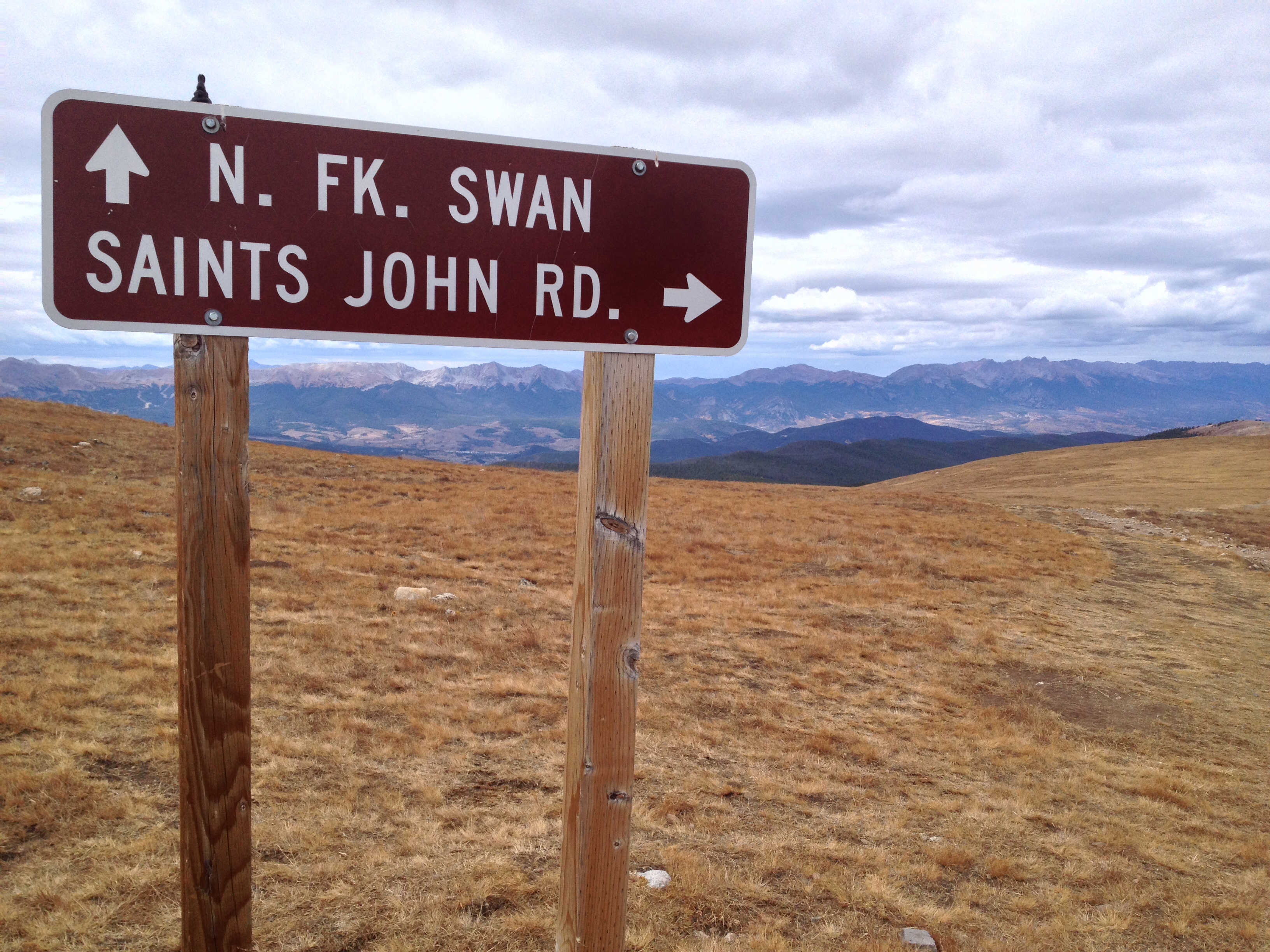
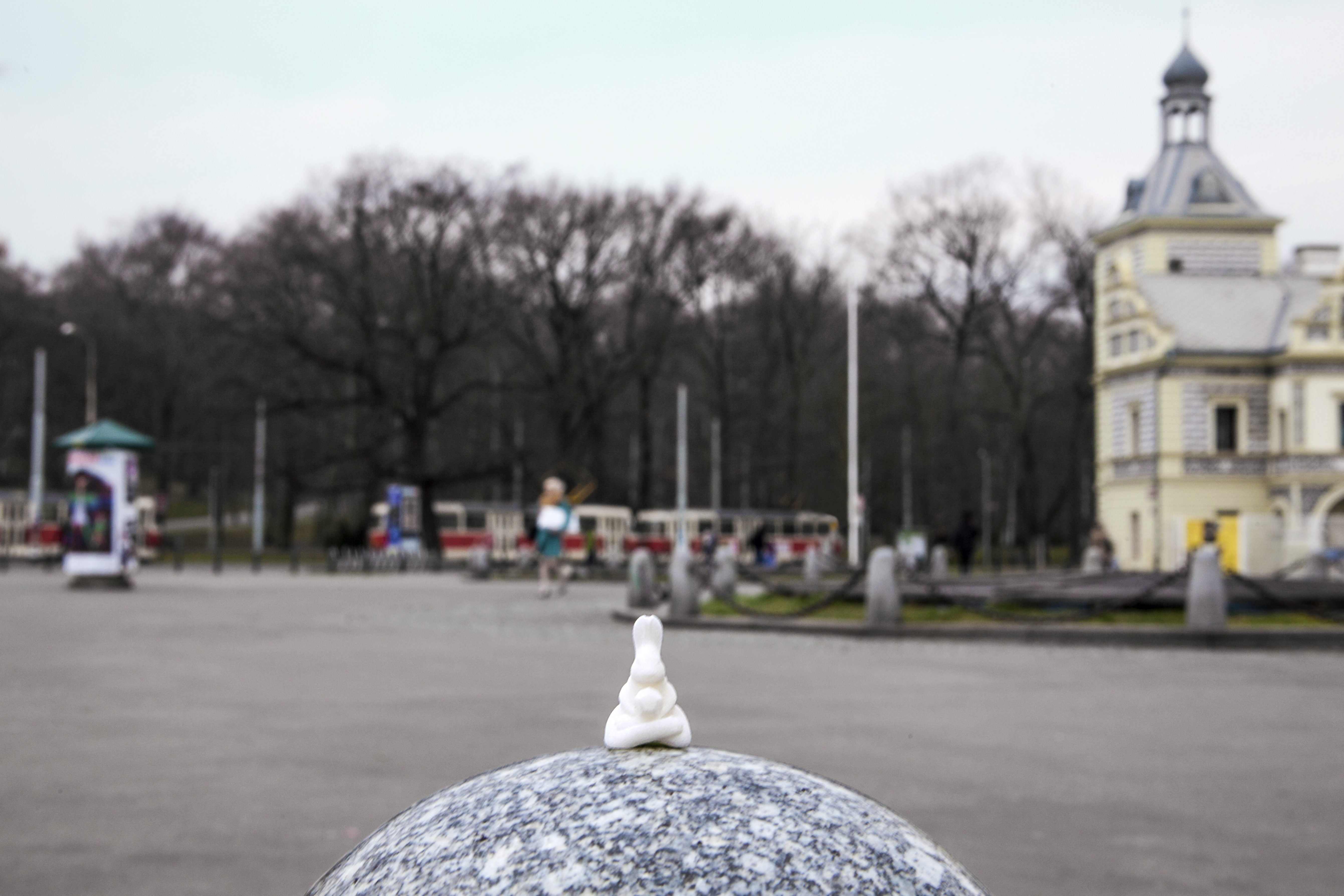
http://www.mysterabbit.com/about
http://www.huffingtonpost.com/2014/06/30/3d-printing-art_n_5534459.html
HW11.1 3D Printing
Tuesday, April 5, 2016
HW10.2 Reading Reflection
I really liked how the reading emphasized that creative projects do not require hightech, expensive materials and tools. Not every classroom is equipped with a laser cutter and a 3D printer. Most classrooms are underfunded for supplies and educators pay out of pocket for many basic necessities. If an art teacher is convinced that the only way to involve technology in their curriculum is if they personally pay for an expensive piece of equipment, then it probably will not happen. Utilizing basic technological sources, like word processing and online publishing, allow educators to use technology without breaking the bank and give students a new creative outlet.
In the second reading, the story about "Googling the Error" really resonated with me because it is something that I grew up with, but I had to teach it to my parents. Whenever I have a problem with the computer or the wifi or the television, I google the problem and find the solution online. My ability to solve problems this way made my parents think I was very technologically savvy and they often asked me for help. When I went away for college, I had to teach them how to google problems for themselves because it seemed illogical for them to call me just to have me google it. I had no more knowledge than they did and we both had access to the internet so really they were just as capable of solving the problem.
In the second reading, the story about "Googling the Error" really resonated with me because it is something that I grew up with, but I had to teach it to my parents. Whenever I have a problem with the computer or the wifi or the television, I google the problem and find the solution online. My ability to solve problems this way made my parents think I was very technologically savvy and they often asked me for help. When I went away for college, I had to teach them how to google problems for themselves because it seemed illogical for them to call me just to have me google it. I had no more knowledge than they did and we both had access to the internet so really they were just as capable of solving the problem.
HW10.3 Blog Comments
Blogs I commented on:
Anita
Nina
Ava
Carrianna
Teny
Leying
Jihyun
While commenting on everyone's blogs I was most drawn to the works that people said were based on ideas or pieces that they had worked with before. Clearly they were comfortable with the theme or aesthetic that they knew and used that comfort to help them with a new, unfamiliar medium.
HW10.1 Laser Cutting Project
I really enjoyed this project. Laser cutting is an amazing medium that presents so many possibilities. Besides being able to cut nearly any design with the laser, my favorite part of working with the laser cutter was the multitude of materials that could be cut. Cardboard, wood, foam, and plexiglass were all at our disposal and each reacted slightly differently to the laser. I chose cardboard for this project because I liked that it made the piece seem casual and unlike an art object. To see an intricate design on such a simple material creates an intriguing contrast. I also chose to work with etching and not cutting because I though it would make the small details of the design stand out more. I like to think that this could be used by a paranormal investigator on the go. I really loved working with Sohee and Andrew because they gave such clear and concise instructions that made the intimidating process very easy to understand.
Tuesday, March 29, 2016
HW9.2 Scratch Experience and Classroom Connections
I enjoyed working with Scratch and I can see why an artist would be attracted to working with programming. There are so many possibilities with the code if you know how to manipulate it correctly.
- Working with scratch can be summed up in three words: "trial and error." I made many mistakes and had to replay my animation again and again to find where I had errors in the code. Most of all, I needed time to work through the mistakes and teach myself. Similarity, in an art classroom, students not only need instruction, materials, and motivation, they also need time to work with the medium and allow themselves to make mistakes. This especially true when using new media materials because students will have less familiarity with them. Giving students plenty of time to emerge themselves in the activity is essential for technology to work in the classroom.
- Although I did not choose to make a game while using Scratch, the ability to do so is a great application of the program. I think it is a wonderful opportunity for artists to create interactive works of art, allowing their audience to truly be involved in the process. Likewise, in a classroom it is important to remember that students will want to be a pert of the lesson. Simply lecturing to a classroom will not inspire the same enthusiasm as creating a lesson that incorporates interactivity. Allowing students to provide examples and ask questions during the instructional session will keep them attentive and add to their experience.
HW9.3.2 Programming Artist Research: Nick Briz
Nick Briz is an artist who uses programming to create algorithms for art and tear apart code in order to create glitches. In his work, The Coldplay Song Generator, he used code to create an application which creates new songs based on the patterns and formulas of the band Coldplay.
The application can be downloaded on his website.
He also works with Glitch Art, which is a form of art that is interested in the visual results of mistakes and error in code. Briz creates digital works that actively have "badly" written code in order to produce the glitches. Because they are actively desired, the glitches cease to be seen as mistakes and become the focus of the work. In order to make glitches appear in specific ways, the code must be written precisely, so although it is filled with "errors," it still requires extreme programming knowledge and skill.
From The Ground Up In Order, Embrace from Nick Briz on Vimeo.
Sources:
http://nickbriz.com/
http://artcopyright.interartive.org/coldplay-song-generator-copy-drive-sample-chest/
HW9.3.1 Programming Artist Research: Raven Kwok
Raven Kwok is a Chinese artist who uses programming to create works of art. Kwok works with the programming software and language known as Processing. Many of his works are studies on fractals and patterns, but others are playful uses of internet memes.
Sources:
http://www.creativeapplications.net/processing/115c8-and-edf0-by-raven-kwok-recursive-and-transforming/
http://thenextweb.com/dd/2012/07/14/if-you-like-programming-and-fine-art-you-will-love-raven-kwoks-work-made-with-processing/#gref
Sources:
http://www.creativeapplications.net/processing/115c8-and-edf0-by-raven-kwok-recursive-and-transforming/
http://thenextweb.com/dd/2012/07/14/if-you-like-programming-and-fine-art-you-will-love-raven-kwoks-work-made-with-processing/#gref
Tuesday, March 22, 2016
HW8.1 Sound Project
For this sound piece I recorded the sound of water running in the sink, myself eating crackers, drinking water, and pouring water into a cup. I liked the sound of the crackers crunching and I looped them over and over as if I were eating a whole box of crackers. The crackers made me thirsty so the rest of my project was associated with water and the fulfillment of thirst.
HW8.3 Sound Reflection
By observing the sounds around me, I have realized that sound is a constant stimuli and the brain has learned to ignore all but the most important noises. As I type this blog post, my fingers are making tapping sounds on the keys of my computer and I can hear my desk shaking slightly with each sudden move. These sounds are so common in my mind, that I have stopped noticing them except for the rare cases that I open my mind to them.
When I think of sound in the classroom, I am immediately reminded of the many tricks I have seen teachers use to quiet down a bustling group of students. Teachers will begin to stage whisper, hoping their students will quiet in an effort to understand them or use the "If you can hear me clap once" tactic. I have recently had a professor in a Teachers College class use a gong to call the attention of the class after a series of group discussions. The gong was strange sound to hear in a classroom setting and it caught the attention of everyone in the room. Teachers often use incongruous sounds to attract student attention, but there are so many sounds in the classroom that few of them can be seen as incongruous. It is commonplace to hear air conditioners, heaters, footsteps in the hall, fire trucks and ambulances in the streets below, and construction workers on the sidewalks outside. With so many sounds in the ears of a student, it is a miracle that any of them hear the teacher's lesson and remain attentive.
When I think of sound in the classroom, I am immediately reminded of the many tricks I have seen teachers use to quiet down a bustling group of students. Teachers will begin to stage whisper, hoping their students will quiet in an effort to understand them or use the "If you can hear me clap once" tactic. I have recently had a professor in a Teachers College class use a gong to call the attention of the class after a series of group discussions. The gong was strange sound to hear in a classroom setting and it caught the attention of everyone in the room. Teachers often use incongruous sounds to attract student attention, but there are so many sounds in the classroom that few of them can be seen as incongruous. It is commonplace to hear air conditioners, heaters, footsteps in the hall, fire trucks and ambulances in the streets below, and construction workers on the sidewalks outside. With so many sounds in the ears of a student, it is a miracle that any of them hear the teacher's lesson and remain attentive.
Monday, March 21, 2016
HW8.2.2 Sound Artist Research: Miya Masaoka
Miya Masaoka is a musician and performance artist who has worked with insects in some of her sound pieces. From 1996 to 2001, Masaoka worked on The Bee Project. She created a score that instructed how the sound in the work would be manipulated by a mixer. The sound that she applied to the score, was the buzz of 3,000 live bees in a glass beehive on the stage of the performance space. Distorting the sound of the bees in real time and projecting the result back into the room showcased the immediate power of sound work and highlighted the contrast between the wild, natural bees and the calculated, synthetic remix.
Masaoka continued to work with bees and created a short video, Adventures of the Solitary Bee. In it, the sound of bees is overlaid with a musical score written by Masaoka and narration discussing the physical and philosophical life of bees.
Sources:
http://www.miyamasaoka.com/interdisciplinary/skin_insects/index.html
Masaoka continued to work with bees and created a short video, Adventures of the Solitary Bee. In it, the sound of bees is overlaid with a musical score written by Masaoka and narration discussing the physical and philosophical life of bees.
Sources:
http://www.miyamasaoka.com/interdisciplinary/skin_insects/index.html
HW8.2.1 Sound Artist Research: Alvin Lucier
Alvin Lucier is an artist who uses sound and recordings in his work. Several years ago, I became aware of his work, I Am Sitting in a Room. The original work consisted of Lucier sitting in a room with a microphone and a tape recorder. He narrated a pre-conceived statement into the microphone saying, “I am sitting in a room, different from the one you are in now. I am recording the sound of my speaking voice...” and so on. Once he finished speaking his statement, the recorded tape was played into the room while being recorded on to a new tape. Then the new recording was played and recorded. This happened again and again for forty-five minutes. At first the recordings sound like faithful portrayals of Lucier's original statement. Eventually, like a document that has been photocopied far too many times, the recordings begin to develop distortions. Certain frequencies began to emerge and are made more prominent with each new recording. By the end of the work, Lucier's original statement is no longer decipherable. The recordings result in a droning static hum that represents the ambient sound existing in the room. Lucier's work is especially interesting due to his speech impediment. As a man with a stutter, Lucier was familiar with oratory distortions and may have been inspired by them. His stutter makes a small appearance in I Am Sitting in a Room, but is erased along with the rest of his speech in the final product.
Sources:
http://www.moma.org/explore/inside_out/2015/01/20/collecting-alvin-luciers-i-am-sitting-in-a-room/
http://www.npr.org/sections/13.7/2014/10/17/356999444/what-art-and-the-game-telephone-teach-us-about-copying-speech?utm_source=facebook.com&utm_medium=social&utm_campaign=npr&utm_term=nprnews&utm_content=2041
Sources:
http://www.moma.org/explore/inside_out/2015/01/20/collecting-alvin-luciers-i-am-sitting-in-a-room/
http://www.npr.org/sections/13.7/2014/10/17/356999444/what-art-and-the-game-telephone-teach-us-about-copying-speech?utm_source=facebook.com&utm_medium=social&utm_campaign=npr&utm_term=nprnews&utm_content=2041
Tuesday, March 8, 2016
HW7.2.1 Video Artist Research: Bruce Nauman
Bruce Nauman is one of my favorite artists and he often works with video in his art. I love many of his video works, especially those that deal with video surveillance and include live video of the audience as they interact with the work, but for this post I will focus on Revolving Upside Down. In a famous quote from an interview with Ian Wallace and Russell Keziere, Nauman said "If I was an artist and I was in the studio, then whatever I was doing in the studio must be art." This is an interesting concept that immediately drew me to Nauman and is clearly seen in many of his videos. Nauman often used video as a means of simply recording his actions as an artist in the studio. He would perform extremely banal actions, such as walking seen in the video below, but because he was an artist in the studio, he considered the actions to be art.
Walking in an Exaggerated Manner Around the Perimeter of a Square
In Revolving Upside Down though, Nauman rotated the video camera so that his normally mundane activity, pivoting on one foot, appeared as a gravity-defying act. The camera recorded his movements upside down and completely changed the affect of the work. Nauman utilized the camera as more than a neutral observer and allowed it to influence the final work.
Sources:
http://www.vdb.org/titles/revolving-upside-down
http://whitecube.com/exhibitions/bruce_nauman_inside_the_white_cube_2012/
http://www.moma.org/collection/works/120629?locale=en
Subscribe to:
Posts (Atom)


















